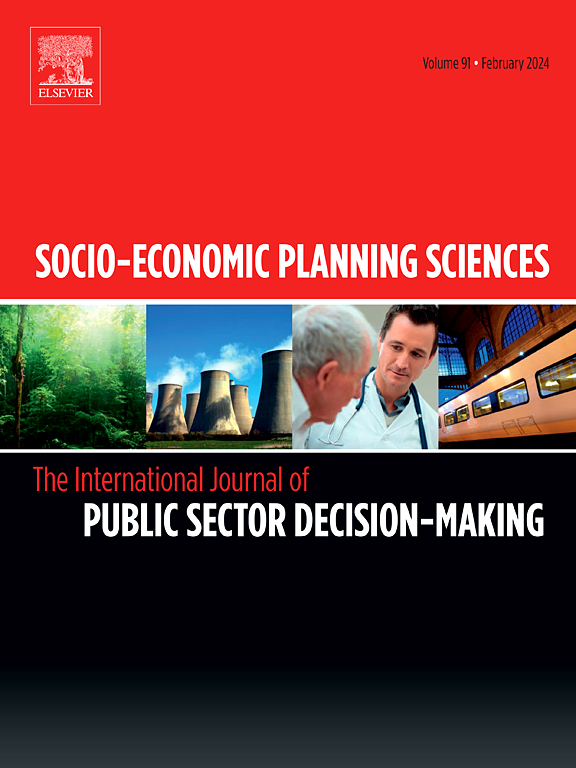International differences in educational equity: An assessment using the Benefit of the Doubt model
IF 5.4
2区 经济学
Q1 ECONOMICS
引用次数: 0
Abstract
Educational equity is a key tool to promote countries’ social and economic development and has become a central issue in international policy agendas. Since equity is multidimensional in nature and a complex process, a proper assessment of performance in terms of equity is a demanding task that requires aggregating several individual indicators to obtain a synthetic and simplified vision. This research aim to fill this gap by providing a synthetic measure to carry out a comprehensive and fair comparison of the degree of equity of the OECD educational systems. In particular, we use a robust directional Benefit of the Doubt (BoD) model to construct an Equity Composite Indicator, which allows us to benchmark the OECD educational systems in terms of equity based on a single criterion, considering its multiple dimensions and respecting the different priorities and particularities of the educational systems. The results find significant differences in equity among OECD educational systems. Furthermore, the empirical analysis reinforces the hypothesis that educational equity is a multidimensional concept, requiring the inclusion of all dimensions in the comparative analysis. This research provides a new approach that can be used not only to assess the evolution of educational equity across countries, but also to model its relationship with other economic variables. The proposed model could be useful in helping policymakers understand and improve educational equity in practice, as well as evaluate the impact of public policies.
教育公平的国际差异:使用“怀疑的好处”模型的评估
教育公平是促进各国社会和经济发展的重要工具,已成为国际政策议程的核心问题。由于公平本质上是多方面的,是一个复杂的过程,从公平的角度对业绩进行适当的评价是一项艰巨的任务,需要综合若干个别指标,以获得综合和简化的看法。本研究旨在通过提供一种综合措施来对经合组织教育制度的公平程度进行全面和公平的比较,从而填补这一空白。特别是,我们使用了一个强大的定向怀疑利益(BoD)模型来构建公平综合指标,该指标使我们能够基于单一标准,考虑其多个维度并尊重教育系统的不同优先事项和特殊性,以公平为基础对经合组织教育系统进行基准测试。结果发现,经合组织各教育体系在公平方面存在显著差异。此外,实证分析强化了教育公平是一个多维概念的假设,需要在比较分析中包含所有维度。这项研究提供了一种新的方法,不仅可以用来评估各国教育公平的演变,还可以用来模拟其与其他经济变量的关系。所提出的模型可能有助于政策制定者在实践中理解和改善教育公平,以及评估公共政策的影响。
本文章由计算机程序翻译,如有差异,请以英文原文为准。
求助全文
约1分钟内获得全文
求助全文
来源期刊

Socio-economic Planning Sciences
OPERATIONS RESEARCH & MANAGEMENT SCIENCE-
CiteScore
9.40
自引率
13.10%
发文量
294
审稿时长
58 days
期刊介绍:
Studies directed toward the more effective utilization of existing resources, e.g. mathematical programming models of health care delivery systems with relevance to more effective program design; systems analysis of fire outbreaks and its relevance to the location of fire stations; statistical analysis of the efficiency of a developing country economy or industry.
Studies relating to the interaction of various segments of society and technology, e.g. the effects of government health policies on the utilization and design of hospital facilities; the relationship between housing density and the demands on public transportation or other service facilities: patterns and implications of urban development and air or water pollution.
Studies devoted to the anticipations of and response to future needs for social, health and other human services, e.g. the relationship between industrial growth and the development of educational resources in affected areas; investigation of future demands for material and child health resources in a developing country; design of effective recycling in an urban setting.
 求助内容:
求助内容: 应助结果提醒方式:
应助结果提醒方式:


